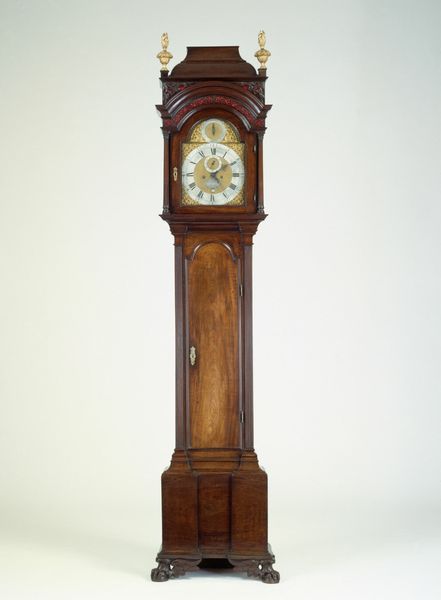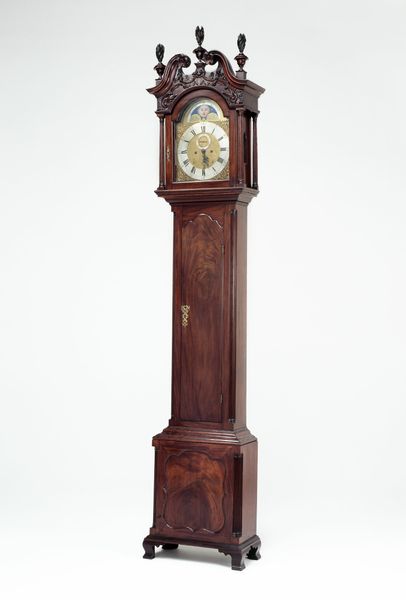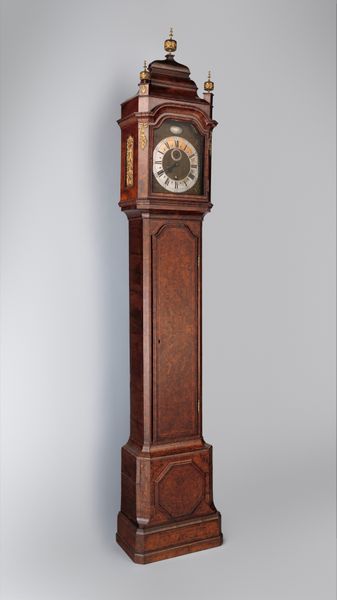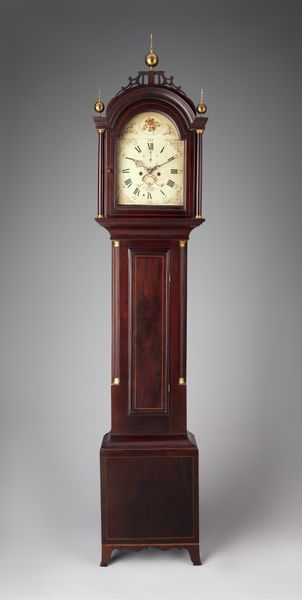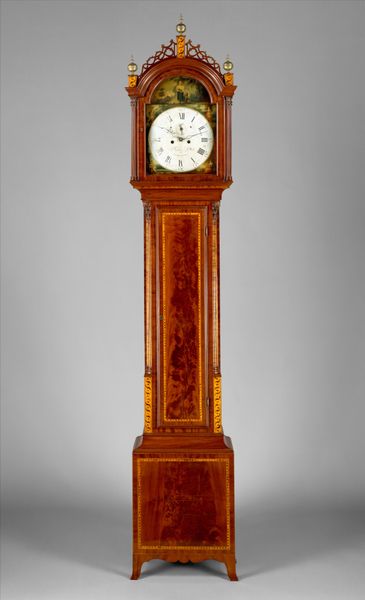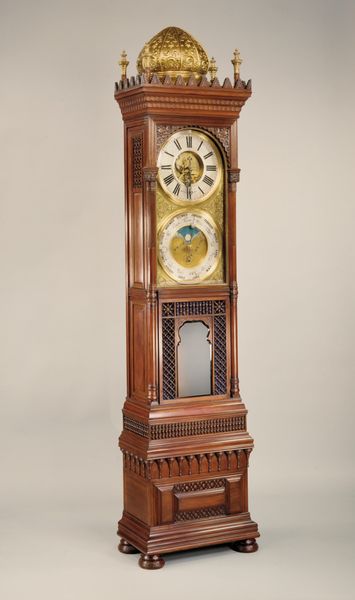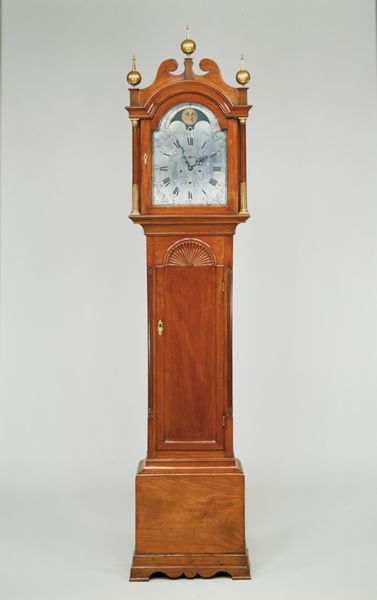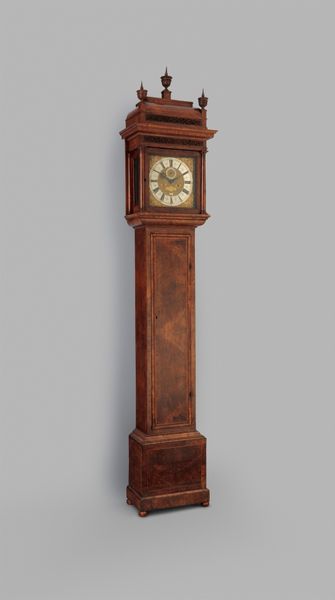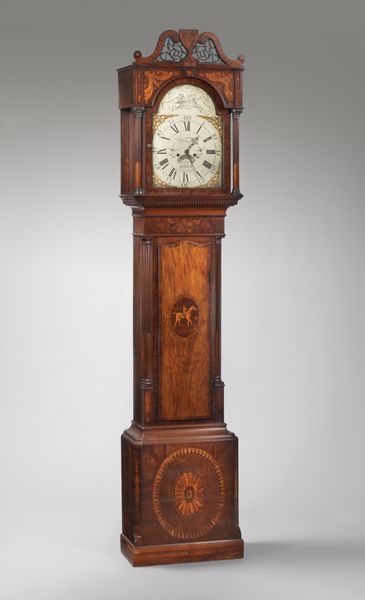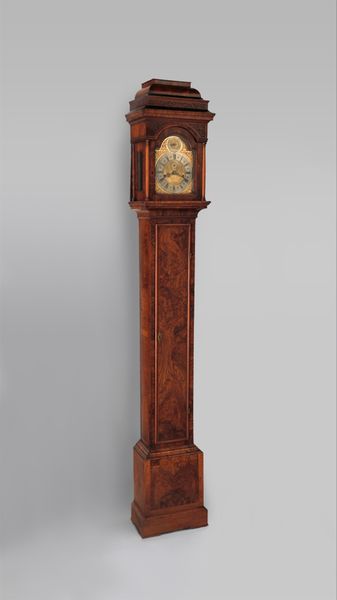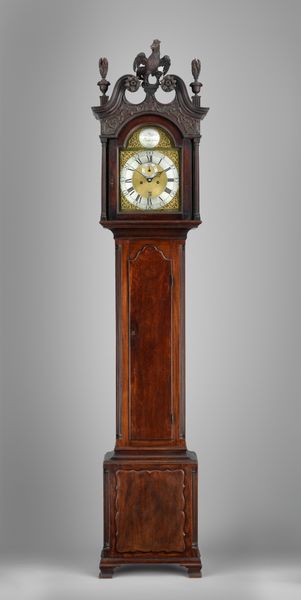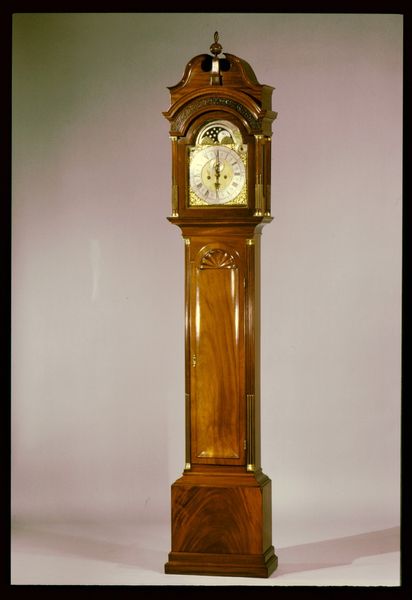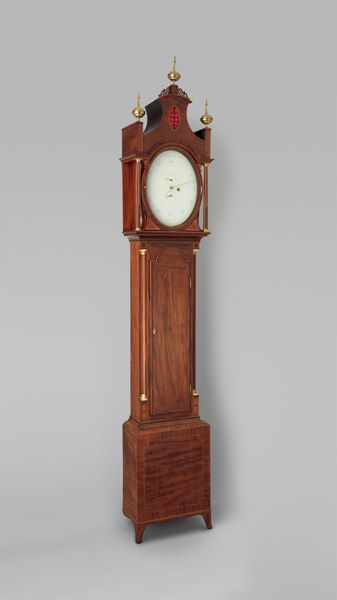
carving, sculpture, wood, architecture
neoclacissism
carving
sculpture
sculpture
united-states
wood
architecture
Dimensions: 104 x 19 1/2 in. (264.2 x 49.5 cm)
Copyright: Public Domain
This "Tall Clock" was crafted by Jacob Diehl, who lived from 1776 to 1858. Imagine the world in which Diehl was working. As an artisan, his status was intimately tied to the economic and social structures of his time. His identity was shaped by his craft, his community, and the broader societal expectations placed upon him. The clock embodies both utility and status. In a pre-industrial era, timepieces were not just functional objects but symbols of wealth and sophistication. Clocks like these played a crucial role in regulating daily life, reflecting a society increasingly governed by schedules and punctuality. The clock marks the passage of time, it also reminds us of our own temporal existence and the ever-present march towards the future. We might also consider the stories of those who never had the chance to own such items. This clock serves as a reminder of the disparities and complexities inherent in our shared past.
Comments
No comments
Be the first to comment and join the conversation on the ultimate creative platform.
